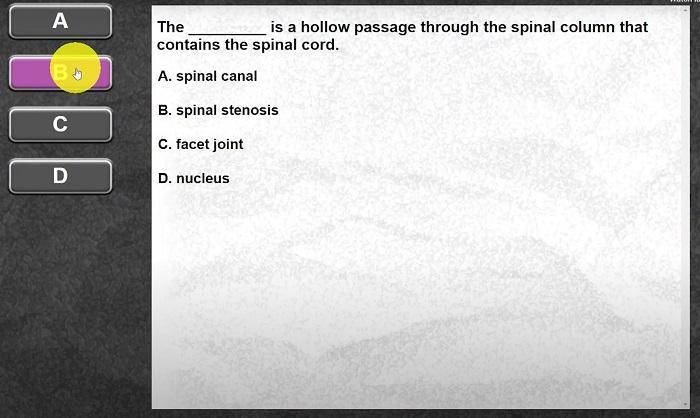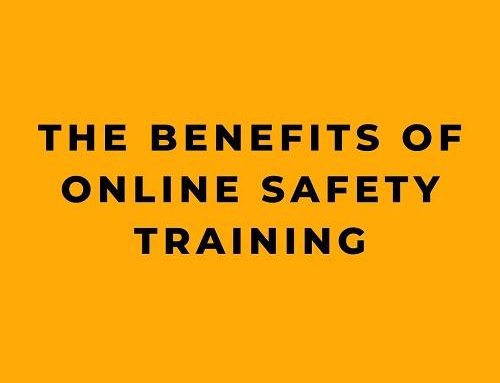e Learning Log In for a demo of the Online Safety Trainer LMS
Are you tired of boring, ineffective training programs that your team dreads attending? Say goodbye to the days of disengaged employees and hello to the future of training with our elearning courses!
Our online courses are designed to revolutionize your training program and keep your employees engaged and invested in the learning process. With elearning, your team can access our courses from anywhere, at any time, making training more convenient and flexible than ever before.
Our courses are not only convenient, but they’re also highly effective. We use full-motion HD video filmed in real-life workplace settings to create an immersive learning experience. Interactive quiz questions ensure that you’re fully engaged in the material and retaining as much information as possible. And if you miss a question on a quiz, our remediation training presents the course content that explains the topic again, reducing training time and making our courses even more efficient and effective.
But the benefits don’t end there. Our elearning courses are designed to be fully trackable, meaning that managers can easily monitor their employees’ progress and ensure that everyone is completing their training. With elearning, you’ll have complete visibility into your team’s progress and can rest assured that they’re getting the training they need to excel.
We offer a wide range of elearning courses to meet your needs, including adaptive learning courses, micro-learning courses, full-length interactive courses, and video streaming (VOD) courses. Our libraries contain over 170 courses on important topics such as regulatory compliance, human resource topics, and general safety topics. From forklift/powered industrial truck safety to hearing safety, our course catalog has you covered.
Don’t settle for boring and ineffective training programs. Take advantage of our elearning courses and revolutionize the way your team learns. With our immersive video content, interactive quizzes, and remediation training, you’ll be able to get the training you need to succeed. So what are you waiting for? Use the elearning log in to access our free demo and see for yourself how our courses can benefit you and your team.
e Learning Log In for a demo of the Online Safety Trainer LMS
Now that we’ve discussed the impressive benefits of elearning and how it can revolutionize your training programs, let’s take a step back and explore the history of distance education. By understanding the evolution of this innovative method of learning, we can better appreciate how elearning is building upon and improving upon the foundations of distance education. From early attempts in the 18th century to modern-day online learning opportunities, distance education has come a long way, and it continues to transform the way people learn and achieve their educational goals.
The History of the Evolution of Distance Education, E Learning, and Online Training
The evolution of distance education has a fascinating history. From its earliest roots in the 18th century to the modern-day online learning opportunities, distance education has come a long way, and it continues to transform the way people learn and achieve their educational goals. So, let’s take a journey through time and explore the various stages of this innovative method of learning.
The story of distance education begins in 1728 when Caleb Philipps, a shorthand teacher, advertised weekly mailed lessons in the Boston Gazette. This was one of the earliest attempts at distance education and paved the way for the development of the modern sense of distance education in the 1840s when Sir Isaac Pitman mailed texts transcribed into shorthand on postcards. He received transcriptions from his students in return for correction, and this student feedback was a crucial innovation in Pitman’s system, which proved to be very successful.
The University of London was the first university to offer distance learning degrees, establishing its External Programme in 1858, making it possible for students to receive instruction at another institution or pursue a course of self-directed study. The External Programme was intended to provide access to higher education to students from less affluent backgrounds, and it was chartered by Queen Victoria. Enrollment increased steadily, and many other universities followed suit.
During the Progressive Era in America, many high schools and colleges expanded, and night schools were opened for men who were older or too busy with family responsibilities, while private correspondence schools offered a flexible, narrowly focused solution outside the big cities. Starting in the 1880s, private schools offered specialized technical training to anyone who enrolled, not just the employees of one company. Public schools also began opening free vocational programmes in the 1900s.
The Open University (OU) was founded in the UK by the-then Labour government led by Harold Wilson in the 1960s. Planning commenced in 1965, and the OU revolutionized the scope of the correspondence programme, helping to create a respectable learning alternative to the traditional form of education. It adopted a radical open admissions policy, accepting its first 25,000 students in 1971. Athabasca University, Canada’s open university, was created in 1970 and followed a similar, though independently developed, pattern.
Internet technology has enabled many forms of distance learning through open educational resources and facilities such as e-learning and MOOCs. Although the expansion of the Internet blurs the boundaries, distance education technologies are divided into two modes of delivery: synchronous learning and asynchronous learning. In synchronous learning, all participants are “present” at the same time in a virtual classroom, as in traditional classroom teaching.
Asynchronous learning, on the other hand, allows students to access course materials flexibly on their own schedules. Online learning has since grown rapidly, with many private, public, non-profit, and for-profit institutions worldwide now offering distance education courses from basic instruction to the highest levels of degree and doctoral programmes.
Despite its benefits, distance education is not without its criticisms. Some barriers to effective distance education include domestic distractions, unreliable technology, program costs, and inadequate contact with teachers and support services. Some students attempt to participate in distance education without proper training with the tools needed to be successful in the program. This can lead to an unsuccessful experience. Studies have also shown that students pursuing a medical professional graduate degree who are participating in distance education courses favor face-to-face communication.
However, distance education still offers numerous benefits, including expanding access to education and training, allowing for flexible scheduling that accommodates personal responsibilities and commitments, and offering a more diverse range of experts and students from varied backgrounds, leading to more opportunities for learning.
Distance education has proven to be a useful tool in helping to address education inequality. For instance, people living in rural or remote areas may have limited access to quality educational resources, but through distance learning, they can still receive a high-quality education. Additionally, distance education is accessible to people with disabilities, as they can learn from the comfort of their homes without having to worry about physical barriers.
The rise of distance education has also opened up new opportunities for educators. They can now create and distribute educational resources and courses to a global audience, allowing them to reach more students than ever before. Educators can also use technology to personalize the learning experience for each student, providing them with the support they need to succeed.
Another significant advantage of distance education is that it allows people to continue their education while working full-time or attending to family responsibilities. With the flexibility that comes with online learning, students can complete their coursework on their schedule, ensuring they can balance their other responsibilities while still advancing their education.
In conclusion, distance education has a rich history that spans centuries. From mailed lessons in the 18th century to the virtual schools and universities of today, it has continued to evolve and expand, transforming how education is delivered worldwide. Despite its challenges, distance education has proven to be a useful tool in increasing access to education and providing flexibility in scheduling, making it easier for people of all ages and backgrounds to learn and succeed. As technology continues to advance, it is likely that distance education will only continue to grow and transform education even further.










